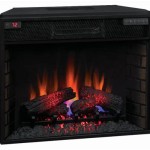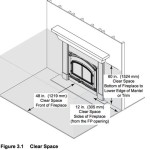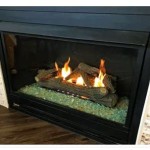Painting Indoor Fireplace Brick: A Comprehensive Guide
Painting indoor fireplace brick is a common home improvement project that can dramatically alter the aesthetic of a living space. Whether the goal is to modernize an outdated look, cover soot stains, or simply refresh the existing color, understanding the process and selecting the right materials are crucial for achieving a durable and visually appealing result. This article provides a detailed guide to painting indoor fireplace brick, covering preparation, material selection, application techniques, and important considerations for a successful outcome.
Before embarking on this project, it’s important to assess the existing condition of the brick. Look for cracks, loose mortar, or significant staining. Addressing these issues prior to painting will ensure a smooth and long-lasting finish. Furthermore, it's important to consider the overall design of the room and how the painted brick will complement the existing décor. Choosing the right color is vital; a poorly chosen color can detract from the room's overall appeal. Prepare to invest time in researching color palettes and testing samples before committing to a final choice.
Key Point 1: Preparation and Cleaning
Proper preparation is the cornerstone of any successful painting project, and painting fireplace brick is no exception. Neglecting this stage can lead to poor adhesion, uneven coverage, and ultimately, a less-than-desirable outcome. The preparation process involves cleaning the brick thoroughly, repairing any damage, and applying a suitable primer.
The initial step is to clean the brick surface. Over time, fireplace brick accumulates soot, dust, and grime. These contaminants can interfere with paint adhesion and create an uneven surface. Begin by dry brushing the brick with a stiff-bristled brush to remove loose debris. A wire brush can be used for stubborn deposits, but caution should be exercised to avoid damaging the brick. Following the dry brushing, thoroughly clean the brick with a solution of trisodium phosphate (TSP) and water. TSP is a powerful degreaser that effectively removes soot and grime. Mix the TSP according to the manufacturer’s instructions and apply it to the brick surface using a sponge or scrub brush. Allow the solution to sit for several minutes to loosen the dirt, then scrub the brick thoroughly. Rinse the brick with clean water to remove all traces of TSP. It is crucial to ensure that all TSP residue is removed as it can react with the paint and affect adhesion.
After cleaning, inspect the brick for any damage, such as cracks or loose mortar. These issues should be addressed before painting. Small cracks can be filled with masonry crack filler, while larger cracks may require repointing with mortar. Repointing involves removing the damaged mortar and replacing it with fresh mortar. This process requires some skill and may be best left to a professional if you are not experienced in masonry repair. Allow the crack filler or mortar to dry completely according to the manufacturer’s instructions before proceeding with the next step.
Once the brick is clean and repaired, the next step is to apply a primer. Priming is essential for several reasons. It seals the porous brick surface, providing a uniform base for the paint. It also improves paint adhesion, preventing the paint from peeling or chipping. Furthermore, a tinted primer can help to block stains and prevent them from bleeding through the paint. Choose a high-quality masonry primer specifically designed for porous surfaces. Apply the primer evenly to the brick surface using a brush or roller. Allow the primer to dry completely according to the manufacturer’s instructions before applying the paint.
Key Point 2: Material Selection: Paint and Tools
The selection of appropriate paint and tools is paramount to achieving a professional and durable finish. Using the wrong type of paint or inadequate tools can lead to a substandard result, requiring additional work and expense. Carefully consider the properties of different paint types and choose the tools that are best suited for the task.
When selecting paint for fireplace brick, heat resistance is a crucial consideration. While the firebox itself should not be painted, the surrounding brick will still be exposed to heat. Standard latex paint is not suitable for this application as it can blister and peel under heat. Instead, choose a high-heat paint specifically designed for fireplaces or masonry surfaces. Options include latex paints formulated for high temperatures, silicate paints, and mineral paints. Latex paints designed for fireplaces are generally more readily available and easier to work with. Silicate and mineral paints offer excellent durability and heat resistance but can be more expensive and require specialized application techniques.
In addition to heat resistance, consider the finish of the paint. Matte finishes are often preferred for fireplace brick as they tend to hide imperfections and provide a more natural look. Semi-gloss or gloss finishes can be used if a more modern or reflective appearance is desired, but they will highlight any imperfections in the brick surface. Choose a paint color that complements the existing décor of the room. It is advisable to test paint samples on a small, inconspicuous area of the brick before committing to a full application. This will allow you to assess the color and finish and ensure that it meets your expectations.
The tools required for painting fireplace brick include paintbrushes, rollers, paint trays, and drop cloths. Choose high-quality paintbrushes in various sizes to accommodate different areas of the brick. A 2-inch angled brush is ideal for cutting in around the edges of the fireplace, while a larger brush can be used for painting the flat surfaces. Use a roller with a nap appropriate for the brick texture. A thicker nap will be needed for rough or uneven brick, while a thinner nap is suitable for smoother surfaces. Protect the surrounding area with drop cloths to prevent paint splatters. Use painter's tape to mask off any areas that you do not want to paint, such as the firebox opening or the surrounding wall.
Key Point 3: Application Techniques and Safety Considerations
The application of paint to fireplace brick requires careful attention to detail and adherence to proper techniques. Applying the paint evenly and allowing it to dry properly will ensure a professional and long-lasting finish. Furthermore, it is essential to prioritize safety during the painting process by taking appropriate precautions.
Before beginning the painting process, stir the paint thoroughly to ensure that the pigments are evenly distributed. Apply the paint in thin, even coats, using a brush or roller. Avoid applying the paint too thickly, as this can lead to drips and runs. Work in small sections, overlapping each stroke to ensure complete coverage. Pay particular attention to the mortar joints, ensuring that they are thoroughly covered with paint. Use a brush to work the paint into the crevices and irregularities of the brick surface.
Allow each coat of paint to dry completely according to the manufacturer’s instructions before applying the next coat. Multiple thin coats are preferable to one thick coat, as they provide better adhesion and a more uniform finish. Typically, two coats of paint are sufficient to achieve adequate coverage, but a third coat may be necessary for darker colors or heavily stained brick. After the final coat of paint has dried, remove the painter's tape carefully to reveal clean, crisp lines. Touch up any areas as needed.
Safety is paramount when painting fireplace brick. Always work in a well-ventilated area to avoid inhaling paint fumes. Wear a respirator or face mask to protect your lungs from harmful vapors. Wear gloves to protect your skin from paint. Avoid getting paint in your eyes. If paint does come into contact with your eyes, rinse them immediately with plenty of water and seek medical attention. Keep paint and painting supplies out of the reach of children and pets. Dispose of used paint and painting supplies properly according to local regulations. If using a ladder to reach high areas of the fireplace, ensure that the ladder is stable and secure. Avoid overreaching or leaning while on the ladder.
Finally, after the paint has fully cured, which can take several days or even weeks depending on the paint type and environmental conditions, consider sealing the painted brick with a clear masonry sealant. This will provide an extra layer of protection against moisture and staining, further prolonging the life of the painted finish. Consult with a paint professional to determine the best sealant for your specific paint type and brick condition.

7 Beautiful Ideas For Painting Interior Brick Fireplaces

Why People Are Painting Interior Brick Fireplaces Sheldon Sons Inc

How To Paint A Brick Fireplace Beamin Moore

How To Prep Prime And Paint A Brick Fireplace Young House Love

How To Paint Your Brick Fireplace Katie Lamb

30 Gorgeous Painted Brick Fireplace Ideas

How To Prep Prime And Paint A Brick Fireplace Young House Love

Brick Anew Fireplace Painting The Stunning Natural Look

How To Update A Brick Fireplace With Chalk Paint Diy Beautify Creating Beauty At Home

Interior Brick 4 Tips For Painting A Fireplace
Related Posts








